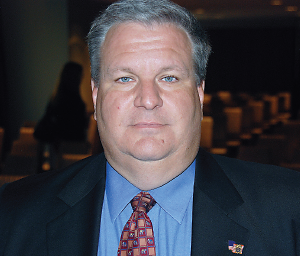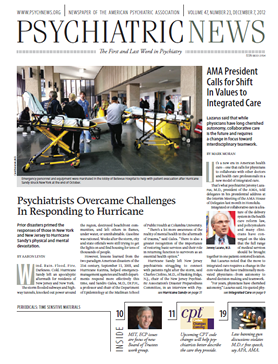Recreational drugs emerge in cycles from the shadows into the glare of scientific and regulatory scrutiny, constantly challenging addiction specialists and drug-enforcement authorities.
Until recent changes in drug laws, numerous synthetic drugs could be legally sold and were, in places like truck stops, health-food stores, and convenience stores, said speakers at the American Academy of Psychiatry and the Law’s annual meeting in Montreal in October.
One popular type of synthetic drug, the so-called “bath salts,” synthetic derivatives of cathinones, were originally based on khat, the plant whose leaves are chewed for psychoactive effect in East Africa and the Arabian peninsula, said Mihaela Stoica, M.D., a PGY-3 psychiatry resident at Saint Louis University (Psychiatric News, March 16).
She pointed out that one of her patients described the effect of bath salts as being “like cocaine but four times stronger.”
The synthetic version, MDPV, inhibits norepinephrine and dopamine inhibitors and produces a variety of physical and psychiatric symptoms.
“These can include paranoia, delusions, confusion, agitation, anxiety, and auditory hallucinations and may persist well after the stimulant effect of the drug wears off, which takes from a few hours to four weeks,” Stoica explained. “They were also legal, cheap, accessible, and not detectable with the usual drug screens.”
The Food and Drug Administration (FDA) placed a one-year ban on the sale of the drugs in September 2011, and Congress made them a Schedule I controlled substance in July 2011 (Psychiatric News, April 15, 2011).
“Americans are the number-one consumers of drugs of abuse, and they have shifted to synthetics and prescription drug abuse over the last 20 years,” said Scott Collier, an investigator for the Drug Enforcement Administration’s St. Louis office.
Some of these synthetic cannabinoids were originally developed by John Huffman, Ph.D., a research professor in organic chemistry at Clemson University, said Collier. Unfortunately, he published his findings, which were soon adapted by amateur drug makers into a variety of salable substances. These unauthorized followers memorialized the category’s founder by labeling new compounds with his initials (JWH-018, JWH-073, etc.).
“Common drug tests don’t detect these compounds,” said Collier. Only expensive gas chromatography can detect them. These testing problems have made synthetic cannabinoids a particular problem for military health officials, since troops are regularly scanned for illicit drugs, but sometimes go undetected.
Prominent symptoms of synthetic drug use can include hallucinations, tachycardia, high blood pressure, paranoia, agitation, and anxiety, said Collier.
The Internet is a key source of information and rumors about these drugs, he noted, adding that “the scarier the story, the more attractive the drug.”
Until the ban on this category of synthetic drugs, users equated “legal” with “safe,” as they do with prescription medications, he said. “And ’medical marijuana’ has acclimated people to the supposedly benign status of not only marijuana but also its chemical derivatives.”
By now, more than 450 chemicals have been synthesized in this class, making control difficult, said Samson Gurmu, M.D., a forensic psychiatry fellow at the University of Pennsylvania, in a poster presentation at the meeting.
“How do you ban a drug based on its molecular structure, when it can be changed easily to another entity?” he asked.
The new FDA regulation deals with that problem by defining drugs by their action, not their structure, Gurmu pointed out. “The law covers anything that is going to work on the cannabinoid receptor, even if it has not been synthesized yet.”


